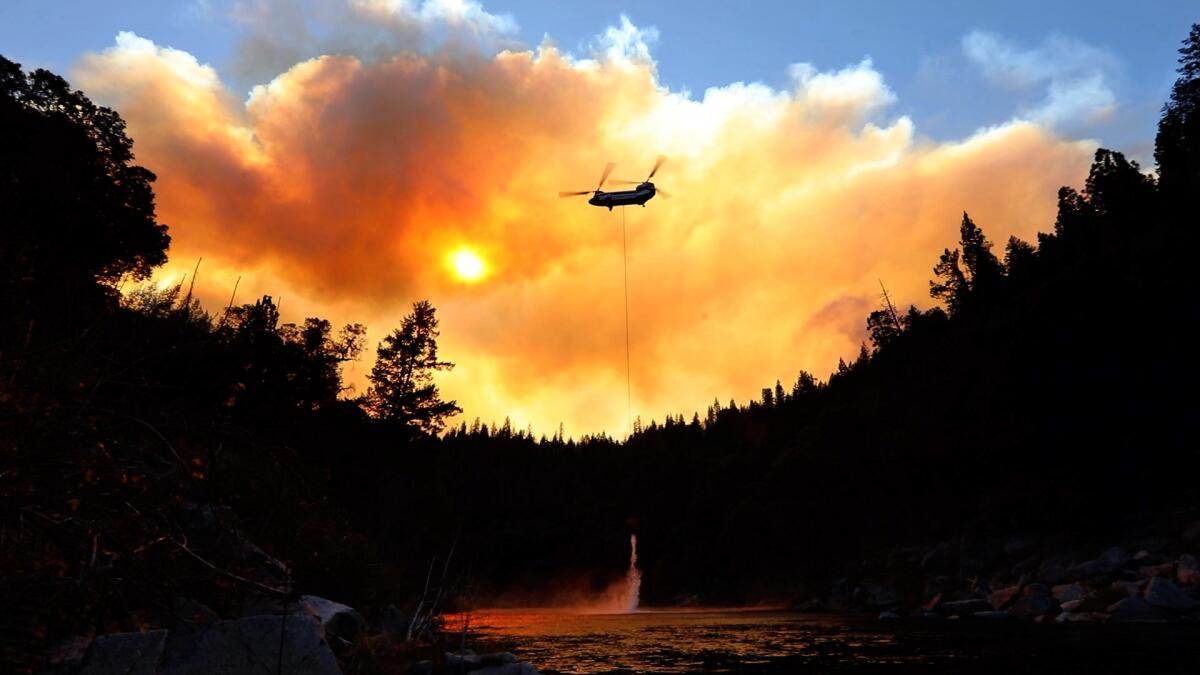PG&E inspections of equipment that sparked deadly Camp fire were flawed, state regulators say

- Share via
For years, Pacific Gas & Electric failed to do climbing inspections of a century-old tower that malfunctioned and sparked last year’s devastating Camp fire, a state investigation has found.
Investigators with the California Public Utilities Commission said there was “visible wear” evident on the arms of a tower tied to the deadly blaze but that PG&E crews had not climbed the tower since at least 2001.
Such an inspection could have identified problems with a small metal hook that was supposed to hold up a transmission line and insulator on the tower, and “its timely replacement could have prevented the ignition of the Camp fire,” investigators said.
The finding is detailed in a 696-page report filed last week by the California Public Utilities Commission, which cited PG&E for violating a dozen state safety rules and regulations.
According to the report by the CPUC’s Safety Enforcement Division, there were systematic problems with the utility’s oversight of the nearly 100-year-old Caribou-Palermo power line blamed for the fire, which obliterated the town of Paradise and killed 86 people.
The lattice steel tower and associated equipment tied to the blaze were installed near the town of Pulga between 1919 and 1921 and placed into service in May 1921 by the Great Western Power Company, according to the report. PG&E took over the power line in 1930.
For years, PG&E “failed to maintain an effective inspection and maintenance program to identify and correct hazardous conditions on its transmission lines,” the report says.
The omission of climbing inspections on the failed tower since 2001 “is a violation of PG&E’s own policy requiring climbing inspections on towers where recurring problems exist,” investigators wrote.
“Shortcomings in PG&E’s inspection and maintenance of the incident tower were not isolated, but rather indicative of an overall pattern of inadequate inspection and maintenance of PG&E’s transmission facilities,” the report states.
State investigators also said PG&E found problems along the Caribou-Palermo power line two months before the fire but improperly flagged them as low-priority repairs that should be completed within 12 months. The report says the defects required immediate repair and should have been given the highest priority.
The Caribou-Palermo power line remains de-energized since the fire, which destroyed more than 13,900 homes.
The California Department of Forestry and Fire Protection concluded earlier this year that PG&E equipment caused the devastating blaze.
The utility has not disputed the findings. PG&E filed for bankruptcy protection in January in part because of losses from the November 2018 Camp fire. Scores of lawsuits have been filed against the utility.
In a statement, Paul Moreno, a PG&E spokesman, said the utility accepts the report’s conclusion “that PG&E electrical transmission lines near Pulga were a cause of the Camp Fire, reaffirming Cal Fire’s earlier determination.”
After wildfires in 2017 and 2018, PG&E has conducted “enhanced inspections” in addition to routine inspection and maintenance programs, Moreno said. The utility has inspected nearly 730,000 transmission, distribution and substation structures and more than 25 million electrical components in areas of high risk by climbing towers and using drones, he said.
“Throughout the inspection process, we have addressed and repaired conditions that pose and immediate safety risk, while completing other high-priority repairs on an accelerated basis,” Moreno wrote.
Critics of PG&E said the report shows the company’s failure to maintain its equipment has put the public at risk.
Jamie Court, president of the nonprofit Consumer Watchdog, said PG&E has a “long record of failure to upgrade and modernize its equipment for safety,” from the gas pipelines that exploded in San Bruno in 2010, killing eight people, to the transmission system in Butte County that started the Camp fire, the deadliest in state history.
“This is not isolated,” Court said, “and it’s also not going to be the last fire that PG&E causes, absent it depowering its entire transmission system, which is not safe for the elderly and other people in society.”
“The Camp fire,” he added, “was par for the course of a company that didn’t want to spend money on fixing obsolete and dangerous infrastructure.”
More to Read
Sign up for Essential California
The most important California stories and recommendations in your inbox every morning.
You may occasionally receive promotional content from the Los Angeles Times.











